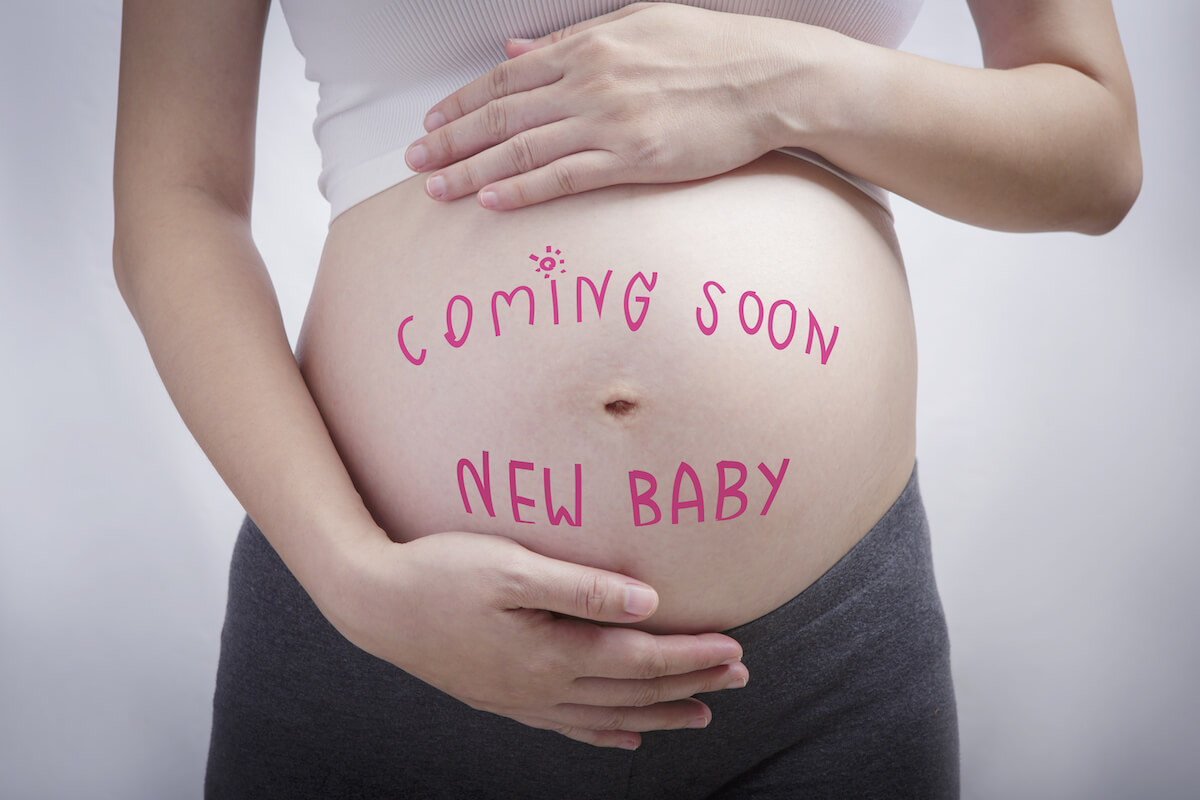by BodyBellyBaby
Share
by BodyBellyBaby
Share

Bonding happens with the production and release of oxytocin in mom and baby at birth.
Bonding is an on-going process and needs to be maintained and nurtured.
Baby massage and child massage is an amazing way to keep the bonding alive and stay in touch and connected to your child.
As a Infant Massage certified instructor and educator, I truly value the power of massage and touch communication for its immediate benefits for a newborn and his/he room, but also for the long term benefits socially, psychologically, and emotionally. I am always researching and fascinated by the power of touch and how many current stress disorders in children could be prevented or alleviated by solely using your fingers, your hands, your skin and your love. Ian education new parents every day, every month and share with them the art of baby massage at Body Belly Baby in Miami.
I am sharing with you an important piece of information about our “love-bonding- nurturing- labor ” hormone – the oxytocin – that plays an essential role in bonding.
Oxytocin-a Bonding Hormone ( source: infant Massage USA)
Oxytocin is a chemical messenger released in the brain chiefly in response to social contact, but its release is especially pronounced with skin-to-skin contact. In addition to providing health benefits, this hormone-like substance promotes bonding patterns and creates desire for further contact with the individuals inciting its release.
When the process is uninterrupted, oxytocin is one of nature’s chief tools for creating a mother. Roused by the high levels of estrogen (“female hormone”) during pregnancy, the number of oxytocin receptors in the expecting mother’s brain multiplies dramatically near the end of her pregnancy. This makes the new mother highly responsive to the presence of oxytocin. These receptors increase in the part of her brain that promotes maternal behaviors.
Oxytocin’s first important surge is during labor. If a cesarean birth is necessary, allowing labor to occur first provides some of this bonding hormone surge (and helps ensure a final burst of antibodies for the baby through the placenta). Passage through the birth canal further heightens oxytocin levels in both mother and baby.
High oxytocin causes a mother to become familiar with the unique odor of her newborn infant, and once attracted to it, to prefer her own baby’s odor above all others’. Baby is similarly imprinted on mother, deriving feelings of calmness and pain reduction along with mom. When the infant is born, he is already imprinted on the odor of his amniotic fluid. This odor imprint helps him find mother’s nipple, which has a similar but slightly different odor. In the days following birth, the infant can be comforted by the odor of this fluid.
Gradually over the next days, baby starts to prefer the odor of his mother’s breast, but continued imprinting upon his mother is not food related. In fact, formula-fed infants are more attracted (in laboratory tests) to their mother’s breast odor than to that of their formula, even two weeks after birth.
By influencing maternal behavior and stimulating milk “let down” (allowing milk to flow) during nursing, oxytocin helps make the first attempts at breastfeeding feel natural. Attempts at nursing during the initial hour after birth cause oxytocin to surge to exceptional levels in both mother and baby. Mothers who postpone nursing lose part of the ultimate hormone high provided for immediately after birth. Powerful initial imprinting for mother and baby is intended to occur chiefly so that mother and baby will be able to find and recognize each other in the hours and days after birth.
Yet a lifetime opportunity for bonding and love is not lost if this initial window is missed. Beyond birth, mother continues to produce elevated levels of oxytocin as a consequence of nursing and holding her infant, and the levels are based on the amount of such contact. This hormonal condition provides a sense of calm and well being. Oxytocin levels are higher in mothers who exclusively breastfeed than in those who use supplementary bottles. Under the early influence of oxytocin, nerve junctions in certain areas of mother’s brain actually undergo reorganization, thereby making her maternal behaviors “hard-wired.”
As long as contact with the infant remains, oxytocin causes mother to be more caring, to be more eager to please others, to become more sensitive to other’s feelings, and to recognize nonverbal cues more readily. Continued nursing also enhances this effect. With high oxytocin, mother’s priorities become altered and her brain no longer signals her to groom and adorn herself in order to obtain a mate, and thus a pregnancy. Now that the child has already been created, mom’s grooming habits are directed toward baby. High oxytocin in the female has also been shown to promote preference for whatever male is present during its surges (one good reason for dad to hang around during and after the birth). Prolonged high oxytocin in mother, father, or baby also promotes lower blood pressure and reduced heart rate as well as certain kinds of artery repair, actually reducing lifelong risk of heart disease.
Although baby makes her own oxytocin in response to nursing, mother also transfers it to the infant in her milk. This provision serves to promote continuous relaxation and closeness for both mother and baby. A more variable release of oxytocin is seen in bottle-fed infants, but is definitely higher in an infant who is “bottle-nursed” in the parents’ arms rather than with a propped bottle.
Persistent regular body contact and other nurturing acts by parents produce a constant, elevated level of oxytocin in the infant, which in turn provides a valuable reduction in the infant’s stress-hormone responses. Multiple psychology studies have demonstrated that, depending on the practices of the parents, the resulting high or low level of oxytocin will control the permanent organization of the stress-handling portion of the baby’s brain — promoting lasting “securely attached” or “insecure” characteristics in the adolescent and adult. Such insecure characteristics include anti-social behavior, aggression, difficulty forming lasting bonds with a mate, mental illness, and poor handling of stress.
When an infant does not receive regular oxytocin-producing responsive care, the resultant stress responses cause elevated levels of the stress hormone cortisol. Chronic cortisol elevations in infants and the hormonal and functional adjustments that go along with it are shown in biochemical studies to be associated with permanent brain changes that lead to elevated responses to stress throughout life, such as higher blood pressure and heart rate. Mothers can also benefit from the stress-reducing effects of oxytocin-women who breastfeed produce significantly less stress hormone than those who bottle-feed.
Nor are fathers left out of the oxytocin equation. It has been shown that a live-in father’s oxytocin levels rise toward the end of his mate’s pregnancy. When the father spends significant amounts of time in contact with his infant, oxytocin encourages him to become more involved in the ongoing care in a self-perpetuating cycle. Oxytocin in the father also in-creases his interest in physical (not necessarily sexual) contact with the mother. Nature now provides a way for father to become more interested in being a devoted and satisfied part of the family picture through his involvement with the baby.
With all of its powers, oxytocin is but one of a list of many chemicals that nature uses to ensure that baby finds the love and care he needs.
STAY IN THE LOOP
Subscribe to our free newsletter.
C-Section rate is on the rise: Navigating Your Birth Choices C-Section Rate has seen a significant uptick in recent years, in the United States, and Miami in particular. This C-section trend is not just a matter of medical necessity but often involves a complex interplay of healthcare practices, personal choices, and, unfortunately, systemic pressures. For
We often ask pregnant women when their due date is. What is the due date ? Definitition of the estimated due date also know as EDD The estimated due date (EDD) is a significant milestone in pregnancy, as it marks the expected date when a pregnant woman is likely to give birth to her baby.
Physical activity health benefits are making a huge difference for pregnant women and babies during pregnancy. To exercise during pregnancy is a healthy decision that every pregnant woman needs to make as soon as released by their healthcare provider. Physical activity during pregnancy can offer numerous benefits for both the mother and the baby. The



